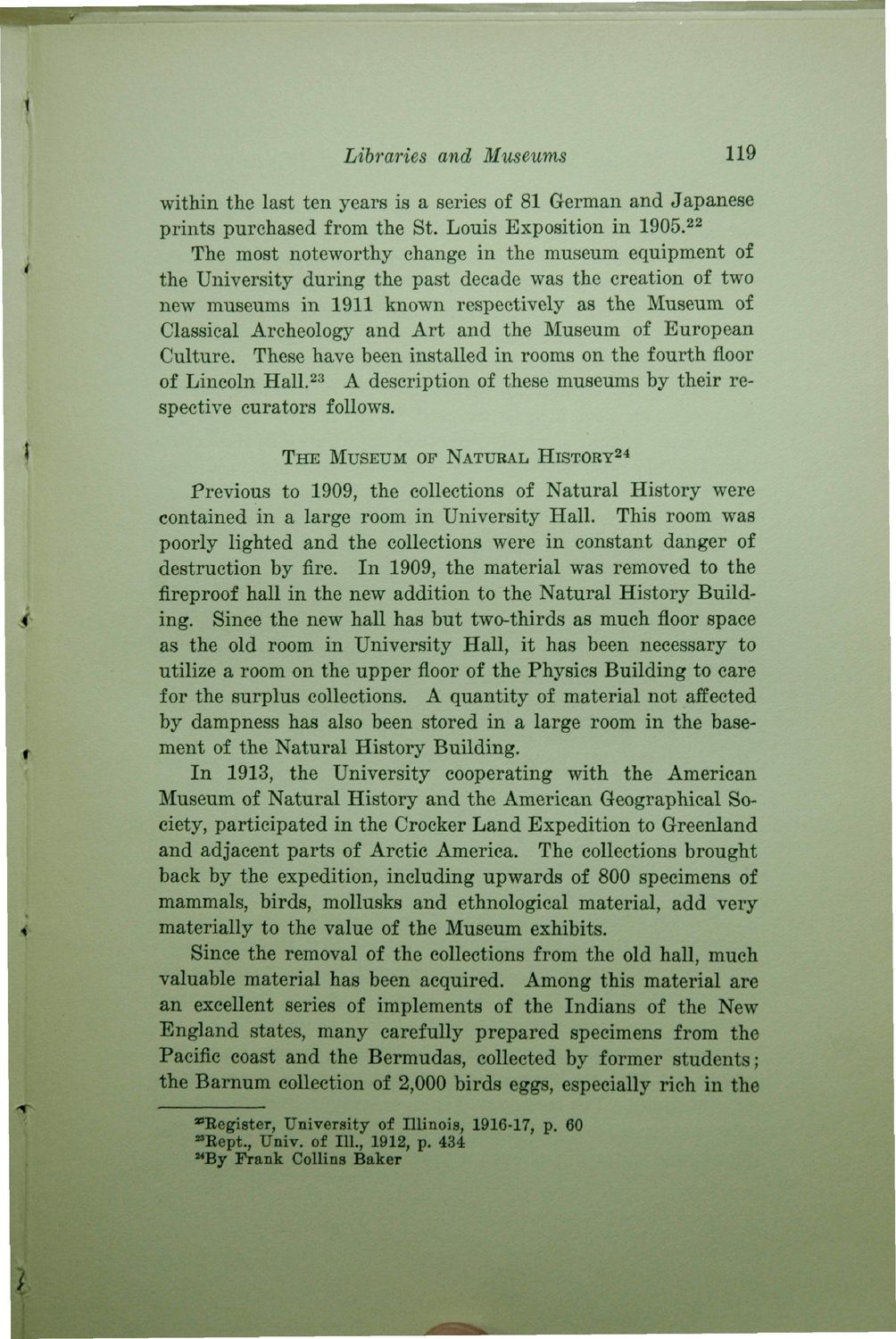| |
| |
Caption: Book - 16 Years (Edmund James)
This is a reduced-resolution page image for fast online browsing.

EXTRACTED TEXT FROM PAGE:
t Libraries and Museums 110 within the last ten years is a series of 81 German and Japanese prints purchased from the St. Louis Exposition in 1905.22 The most noteworthy change in the museum equipment of the University during the past decade was the creation of two new museums in 1911 known respectively as the Museum of Classical Archeology and Art and the Museum of European Culture, These have been installed in rooms on the fourth floor of Lincoln Hall,23 A description of these museums by their respective curators follows. THE MUSEUM OF NATURAL HISTORY24 Previous to 1909, the collections of Natural History were contained in a large room in University Hall. This room was poorly lighted and the collections were in constant danger of destruction by fire. In 1909, the material was removed to the fireproof hall in the new addition to the Natural History Building. Since the new hall has but two-thirds as much floor space as the old room in University Hall, it has been necessary to utilize a room on the upper floor of the Physics Building to care for the surplus collections. A quantity of material not affected by dampness has also been stored in a large room in the basement of the Natural History Building. In 1913, the University cooperating with the American Museum of Natural History and the American Geographical Society, participated in the Crocker Land Expedition to Greenland and adjacent parts of Arctic America. The collections brought back by the expedition, including upwards of 800 specimens of mammals, birds, mollusks and ethnological material, add very materially to the value of the Museum exhibits. Since the removal of the collections from the old hall, much valuable material has been acquired. Among this material are an excellent series of implements of the Indians of the New England states, many carefully prepared specimens from the Pacific coast and the Bermudas, collected by former students; the Barnum collection of 2,000 birds eggs, especially rich in the *Begister, University of Illinois, 1916-17, p. 60 ^Bept., Univ. of III., 1012, p. 434 *By Frank Collins Baker i
| |